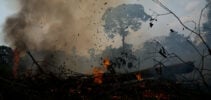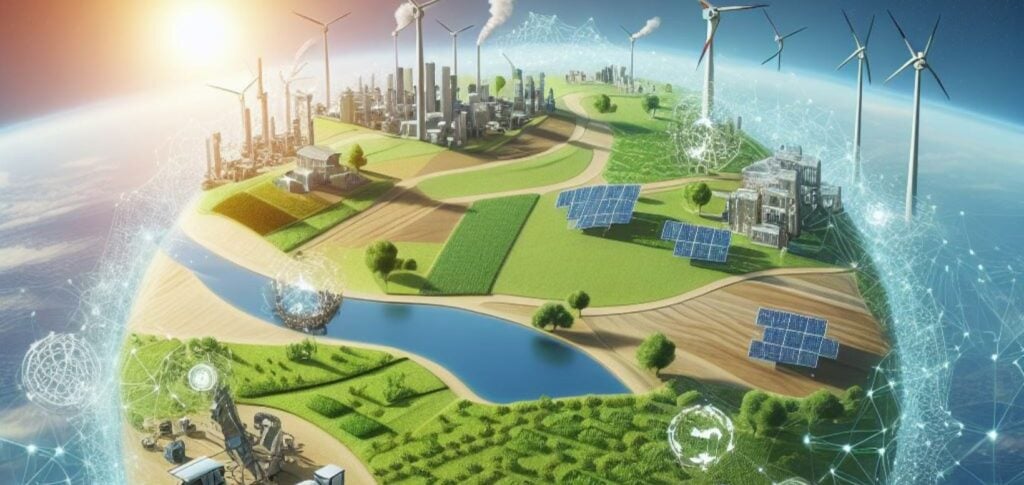🌳 Deforestation: Brazil has the highest increase in greenhouse gas emissions in 19 years
Brazil recorded the biggest increase in greenhouse gas emissions in 19 years, according to a survey by the Climate Observatory released this Tuesday (1).
ADVERTISING
The increase, of 12,2%, occurred in 2021, compared to the previous year, and is mainly caused by deforestation. The country has been the target of international pressure to contain the recent escalation of destruction of the Amazon, the largest tropical forest in the world.
In 2021, Brazil released 2,42 billion gross tons of CO2 equivalent into the atmosphere – a way of measuring all greenhouse gases in the same measure. The last increase in this amount was in 2003, when deforestation data broke an all-time record. Greenhouse gas emissions rose 20% that year, according to the Observatory, which brings together more than 50 civil society organizations.
In November 2021, in Glasgow (Scotland), during the last Climate Summit, COP-26, the federal governmentprometo cut emissions by 50% by 2030, but little progress has been made in meeting this target. The next United Nations conference on the topic will be held starting next week in Sharm el-Sheikh, Egypt.
ADVERTISING
🌱 The “polluting elite” is the one that emits the most polluting gases, says study
Um study prepared by Autonomy (*) – an independent research organization – released this Tuesday (1), concluded that climate policy in the United Kingdom is fraught with inequality.
The richest 1% of its population generated approximately the same carbon dioxide (CO2) emissions in a single year as the poorest 10% did in more than two decades. In other words, it would take a low-income person in the UK 26 years to consume as much carbon as the richest people consume in a single year.
Autonomy also found that if the UK had started taxing the carbon emissions of just the richest 1% two decades ago, the effort could have raised around £126 billion so far, which could have been directed towards reduce greenhouse gas emissions in an equitable manner.
ADVERTISING
The UK is not alone in having such a huge gap between the highest earners and the lowest earners when it comes to greenhouse gas emissions. Research points to the existence of a “polluting elite” whose lifestyles have little relation to those of the majority of people. This holds true for both developed and developing countries, where the poorest tend to be responsible for a small amount of greenhouse gas emissions.
Autonomy's report concludes that, with no carbon tax in the UK, the richest 1% have the freedom to 'dump' disproportionately large amounts of carbon into the atmosphere at little or no cost, creating a burden now borne by the rest of the population. To green the UK economy and bring about the change current and future generations desperately need, this must change.
♻️ More Brazilian states adhere to the ban on plastic bags in stores
The initiative to remove plastic from Brazilians' daily lives is increasingly being embraced by states across the country. Around 13 Brazilian capitals have already regulated the law that prohibits or limits the use of plastic bags in businesses. Recently, Manaus joined the practice with the aim of reducing damage caused to the environment, such as pollution of rivers and seas and the clogging of urban drainage.
ADVERTISING
The trend does not stop just in Brazilian states, countries such as China, France, Argentina and the United States have already adapted to the new format of caring for the environment.
Rafael Costa, operations director Embalixo, explains that “In order to ensure that the topic of sustainability becomes more and more on the agenda, it is necessary that as much as traders, the population also seeks sustainable alternatives. Furthermore, look for companies that seek to reduce carbon emissions from their factories and products.”
Some merchants are already looking for more sustainable alternatives to store their customers' purchases. One of the possibilities is biodegradable bags, which do not use polyethylene or polypropylene in their formula and which are manufactured from renewable materials. “There are companies, like Embalixo, whose focus is the production of garbage bags, but taking into account the needs of retailers, producing sustainable supermarket checkout bags made from zero plastic”, says Costa.
ADVERTISING
According to him, the company is responsible for manufacturing the first garbage bag with zero carbon emissions. “It is important for the country to achieve the goal of zero carbon emissions — which can cause serious imbalances on planet Earth — and, to this end, all companies need to join this process. Therefore, in 2022, all energy at the Embalixo factory began to be generated by renewable sources and its administrative headquarters today has 100% solar energy”, he concludes.
🔥 Fire in the Amazon is more linked to the use of fire in pastures and deforestation than to drought, says study
Um Brazilian study shows that The uncontrolled use of fire by humans has more influence than drought on the fires recorded throughout the Amazon between 2003 and 2020. According to the authors, most periods with a high number of fire outbreaks are more related to agricultural fires and deforestation than to extreme drought conditions.
On average, 32% of the areas burned annually in the biome were on agricultural land (dominated by pastures), followed by natural grasslands (29%) and mature forest areas (16%). When evaluating deforestation and water deficit anomalies, the first factor contributed more than the second to fires in the analyzed period.
The report included the participation of scientists from the National Institute for Space Research (Inpe), the National Center for Natural Disaster Monitoring and Alerts (Cemaden) and the Federal University of Maranhão (UFMA). The article is part of a special edition of the scientific journal Global Ecology and Biogeography which aims to discuss the growing threat of forest fires around the world.
Currently, Brazil has once again experienced a high number of fires in the Amazon – the accumulation of the first 9 months of this year, especially in August and September, was the worst since 2010, when 102.409 fires occurred, according to data from the Queimadas Program, from Inpe. Simultaneously, from 2019 onwards, the deforestation rates in the biome have reached the highest levels since 2009, annually exceeding 10 thousand km² of deforested forests. The trend has continued this year according to alerts of the DETER system.
(Source: FAPESP e Estadão Content)
O Curto Verde is a daily summary of what you need to know about the environment, sustainability and other topics linked to our survival and that of the planet.
(🚥): may require registration and/or signature
(🇬🇧): content in English
(*): content in other languages is translated by Google Tradutor




